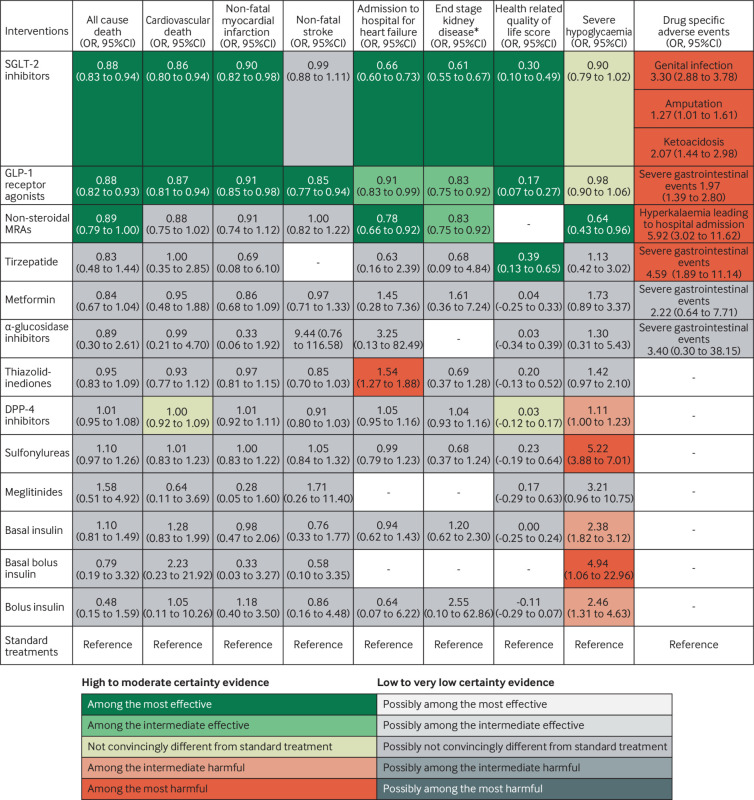Fig 3.
Benefits and harms of drug treatments for type 2 diabetes. Figure shows benefits and harms of the drugs for diabetes with the estimates that represent the comparative effects of the drugs compared with standard treatments. The GRADE (grading of recommendations, assessment, development, and evaluations) approach was used with a null effect threshold to rate and categorise drugs from among the most effective to among the most harmful. Any 95% confidence intervals touching but not crossing the decision threshold (ie, the null effect), were not rated down for imprecision. Drugs that were superior to (or inferior to) standard treatments (ie, point estimate exceeding (or falling below) the null effect and the 95% confidence interval not crossing) were first categorised into the most effective group (or the most harmful group). Drugs among the most effective (or most harmful) but inferior to (ie, point estimate falling below and 95% confidence interval not crossing) at least one drug in that group were then categorised into the intermediate effective group (or the intermediate harmful group). Non-steroidal mineralocorticoid receptor antagonists (MRAs) mainly refer to finerenone. *End stage kidney disease was defined as a composite of a long term dialysis, kidney transplantation, sustained estimated glomerular filtration rate <15 mL per min per 1.73 m2 for ≥30 days, sustained percent decline in estimated glomerular filtration rate of at least 40% for ≥30 days or a doubling of serum creatinine, or renal death; effects on end stage kidney disease were rated down owing to indirectness. CI=confidence interval; GLP-1=glucagon-like peptide-1; OR=odds ratio; SGLT-2=sodium glucose cotransporter-2

